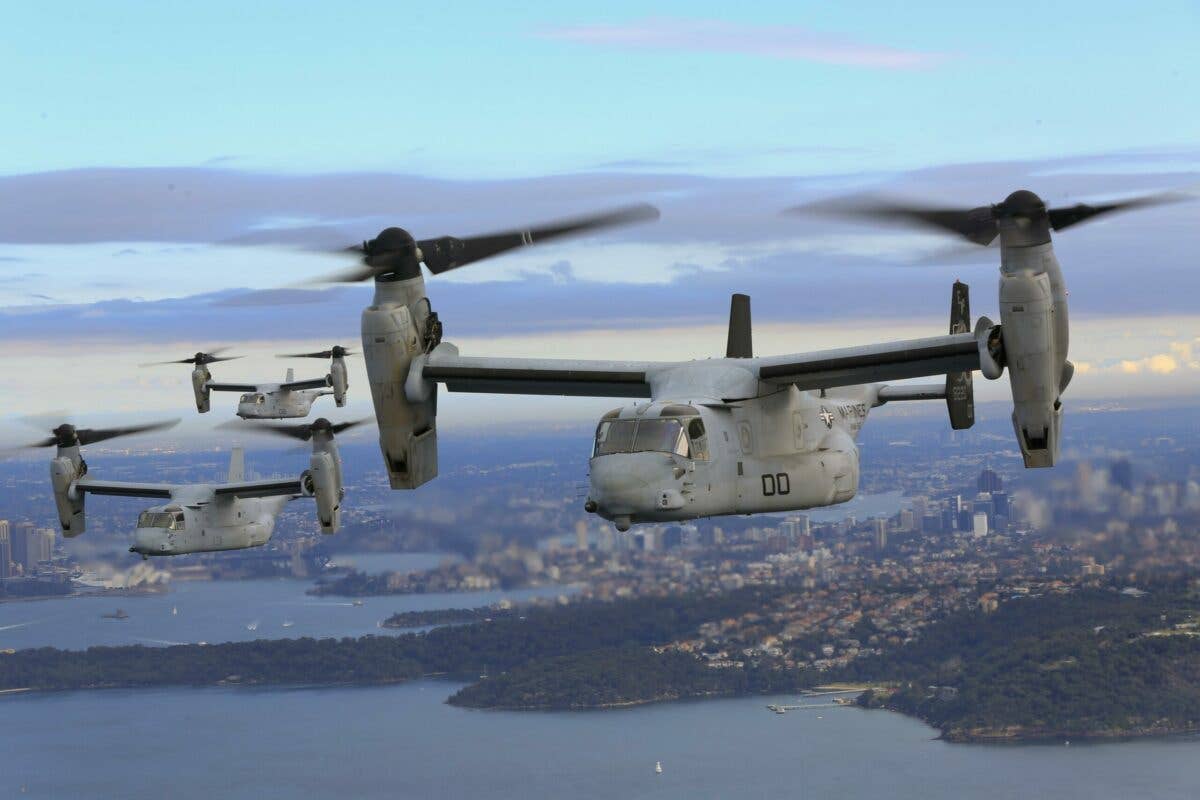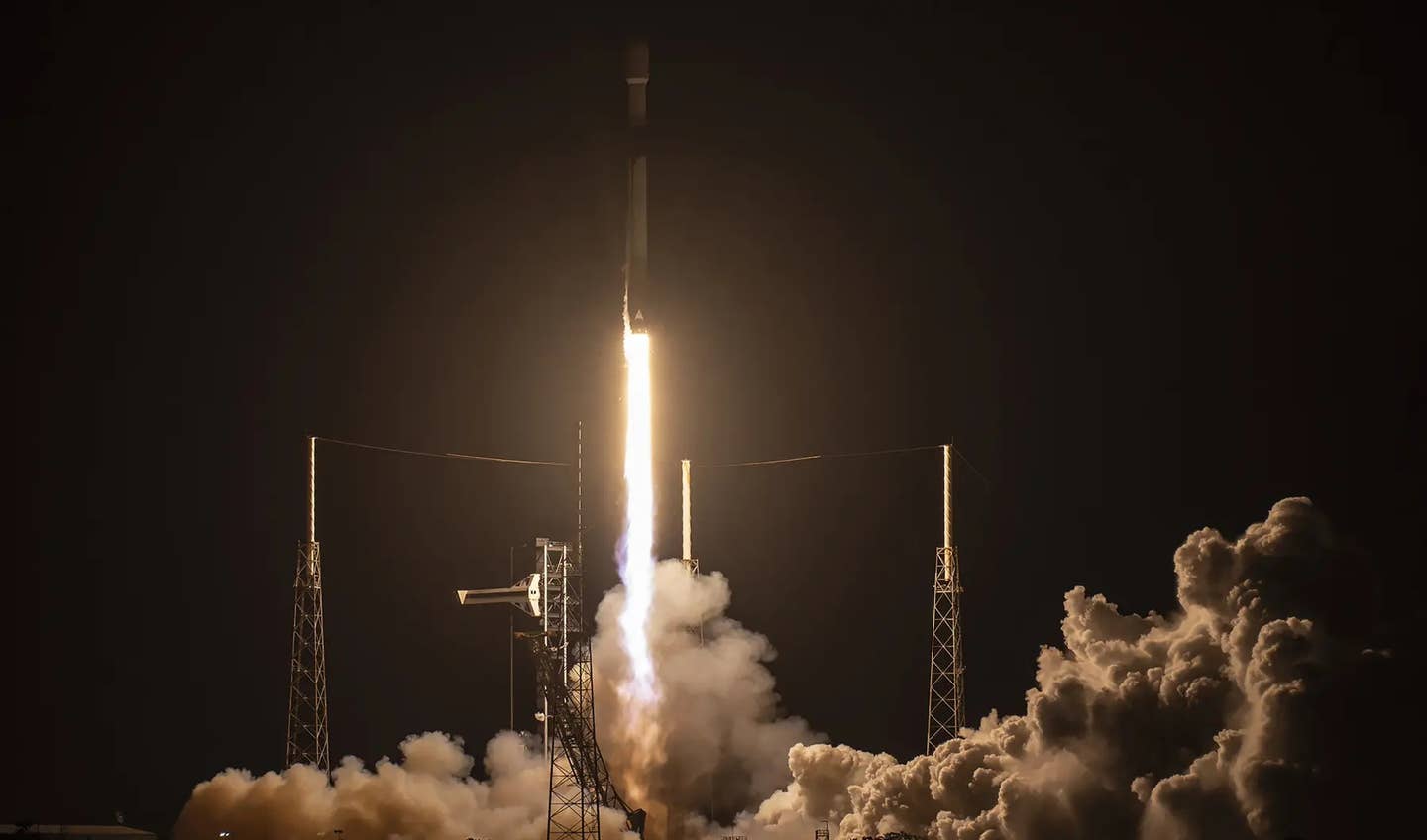No Osprey Stand Down for Marine Corps After AFSOC CV-22 Grounding
The U.S. Marine Corps has no immediate plan to ground its fleet of MV-22 Osprey aircraft, service officials said following news that Air Force Special Operations Command (AFSOC) had grounded its fleet of CV-22 aircraft due to safety investigations into the aircraft’s clutch.

The MV-22 Osprey’s mission for the U.S. Marine Corps is the transportation of troops, equipment, and supplies from ships and land bases for combat assault and assault support. [Courtesy: Naval Air Systems Command]
Two days after Air Force Special Operations Command (AFSOC) grounded its fleet of CV-22 aircraft following incidents involving the aircraft’s clutch, the U.S. Marine Corps says it has no plan to follow suit with its platform variant, the MV-22 Osprey.
"The [U.S. Air Force] USAF employs the V-22 platform differently than the Marine Corps," Marine Corps officials said, adding that its variant of the tilt-rotor aircraft, the MV-22, has logged more than 533,000 flight hours without a catastrophic event because of the known hazard.
"Flying an aircraft is an inherently dangerous mission," Headquarters Marine Corps said in a statement Thursday. "Because we have previously identified this issue and trained our aircrews how to respond safely, we are not ordering a stand down at this time."
AFSOC officials ordered the stand down August 16 following two recent incidents involving a “hard clutch engagement” issue inside the gearbox.
The stand down applies to all 52 CV-22 tiltrotor aircraft in AFSOC’s fleet. As of Thursday, there was no projected timeline for how long it could last, a spokesperson for the command told FLYING.
According to a report by Breaking Defense, which first reported the AFSOC stand down, the hard clutch engagement issue can occur inside the gearbox that connects the propeller rotor to one of the aircraft’s two Rolls-Royce Liberty AE1107C engines. If the clutch slips, the power load transfers to the other engine as designed, but then rapidly transfers back when the clutch re-engages. The scenario forces an immediate landing and could potentially lead to loss of control of the aircraft or an uncontrolled landing.
It's an issue the Marine Corps says it has been aware of for more than a decade.
"The hard clutch issue has been known to the Marine Corps since 2010, and as such, we have trained our pilots to react with the appropriate emergency control measures should the issue arise during flight," Marine Corps officials said. "We also remain engaged with the Joint Program Office, NAVAIR engineering, and our industry partners to resolve the issue at the root cause."
Marine Corps Deputy Commandant for Aviation Lt. Gen. Michael Cederholm has issued interim guidance to aircrews that implements "a procedure to help in the early recognition of a pending hard clutch engagement," the service said.
Since 2010, at least 15 hard clutch incidents have been reported in the V-22 program, which encompasses the Marine Corps and Air Force variants, as well as the U.S. Navy's CMV-22 variant, Breaking Defense reported. Of those incidents, 10 were reported in Marine Corps MV-22s.

Sign-up for newsletters & special offers!
Get the latest FLYING stories & special offers delivered directly to your inbox






